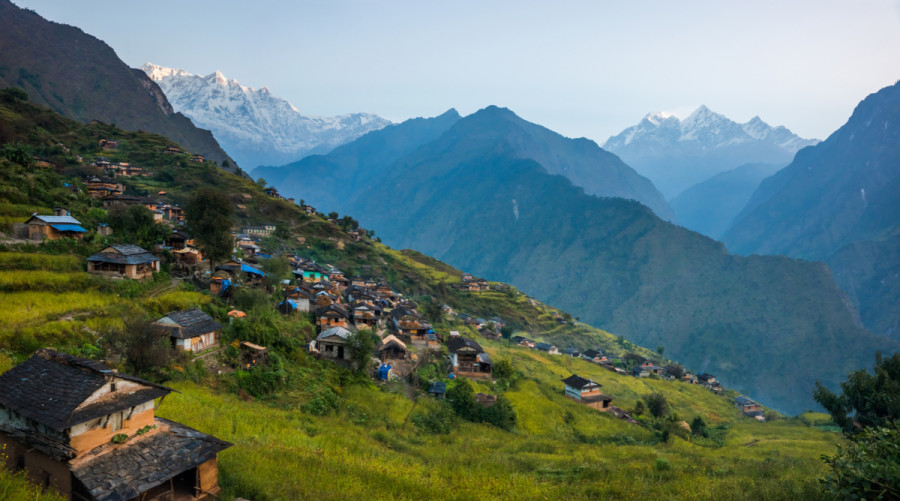Columns
Turning villages into tourist hotspots
A shift towards rural destinations holds the key to post-lockdown tourism revival.
Sunil Sharma
The tourism industry is lining up destinations which earlier had few takers, but now have the potential to become the rage due to trend changes prompted by Covid-19. After being cooped up at home for months following the virus lockdown, and the need to maintain social distance still very relevant with the outbreak showing no signs of abating, thrill-seekers will want to be away from crowds and close to nature in open spaces. They will want to venture into nature and engage in activities that promise a lifetime experience in rural areas in particular. So both hosts and guests are trying to explore new areas. Once the travel industry resumes operations, this trend will not only accelerate but also emerge stronger.
Every year, the World Tourism Organisation announces a theme for World Tourism Day which occurs on September 27 that matches contemporary issues. This year, the theme is ‘Tourism and Rural Development’. ‘Nature and biodiversity are deeply linked to World Tourism Day 2020, a day dedicated to harness the power of tourism to generate better opportunities in rural communities, where living in harmony with nature is crucial for development’, the World Tourism Organisation said. This year’s theme clearly emphasises a shift from ‘glocal’ to ‘local’ that holds the key to post-lockdown tourism industry revival.
Nepal has rich rural development experiences in the tourism sector and has many success stories to share with the world. Homestays at Sirubari and Ghalegaun villages have won international accolades for their cultural richness. In 2001, Sirubari Village Tourism was awarded the Pacific Asia Travel Association Gold Awards; and in 2008, Ghalegaun was declared a SAARC model village in recognition of its cultural richness. These successes were not achieved overnight. People from the villages received basic training in cooking, serving and cleaning.
Ghalegaun conducted a study tour of Sirubari and replicated its programme. In 2001, the Tourism for Rural Poverty Alleviation Programme was launched with the aim of improving the livelihood of the people by harnessing their participation in tourism development activities. The Tourism for Rural Poverty Alleviation Programme was launched in six districts of Nepal, namely Taplejung (Kangchenjunga), Solukhumbu (Everest), Rasuwa (Langtang), Chitwan, Rupandehi (Lumbini) and Dolpa. Its main goal was to contribute to poverty alleviation in Nepal by mainstreaming pro-poor sustainable tourism policies and developing strategies and innovative models that are pro-women, pro-environment and pro-communities.
The Tourism for Rural Poverty Alleviation Programme applied both top-down and bottom-up approaches: Policy, plan and budgets were designed by a steering committee while the programmes were devised at the community level and executed by the local level. The institutional modality was unique in its approach and clearly lived to the spirit of inclusion where communities were fully empowered. By venturing into rural areas, people will focus on contributing towards society, and this is undoubtedly a great way of connecting with locals.
Technology-based innovations are a necessary tool for rural development, especially for those that have considerable human and physical capital embedded in them. Local spring water can be turned into mineral and alkaline water that can be supplied to hotels and restaurants. This will have spill-over effects that will further drive non-farm job creation. Avocado, kiwi and pumpkin seeds are in high demand in the cities, and with value addition, can be sold at premium prices. This requires access to on-farm knowledge on ‘how to grow’ high-value crops through public-private tech platforms that address the knowledge and marketing needs of farmers to pull them out from low-value subsistence farming.
Technologies such as artificial intelligence can be utilised to provide crop intelligence as well as grading to help farmers. Himalayan herbs can be used for wellness retreats in remote areas. An enabling environment needs to be created to help value-addition and develop backward linkages. It is fair to say that farmers will gain real benefits only when they have access to information and the entire agricultural produce trade is digitised, giving much emphasis to backward linkages. With high priorities and an integrated approach, and drawing on Nepal’s many sources of strength, it can gain much-needed momentum for rural development through contributions from tourism.
The Ministry of Culture, Tourism and Civil Aviation has carefully and meticulously drafted a standard operating procedure including the selection criteria for selecting tourism villages. Various elements have been carefully identified and tested for the selection of tourism villages, and it has asked for public feedback. Tourism and rural development are interlinked with each other and can play a meaningful and responsible role only when the tourism sector can generate opportunities to pull rural people out of abject poverty and provide them sustainable livelihoods through employment or business entrepreneurship.
***
What do you think?
Dear reader, we’d like to hear from you. We regularly publish letters to the editor on contemporary issues or direct responses to something the Post has recently published. Please send your letters to [email protected] with "Letter to the Editor" in the subject line. Please include your name, location, and a contact address so one of our editors can reach out to you.




 12.12°C Kathmandu
12.12°C Kathmandu













%20(1).jpg&w=300&height=200)

